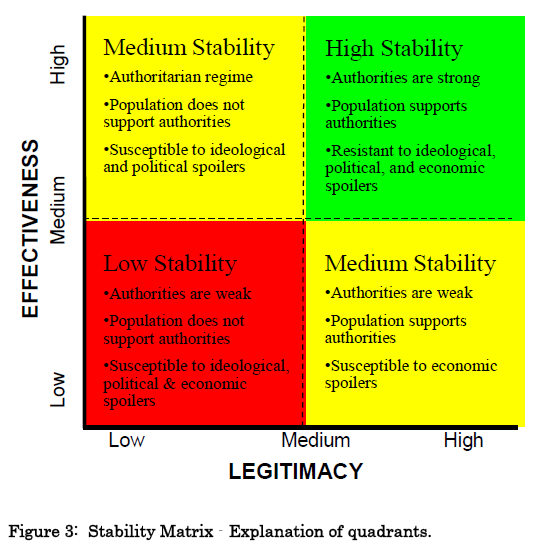 ISAF PRT Handbook, Edition 4
ISAF PRT Handbook, Edition 4
- 317 pages
- Unclassified
- March 2009
All of the PRTs in Afghanistan have been under one theater military command (ISAF) since October 5, 2006, when ISAF completed its four-stage geographic expansion throughout the country by assuming responsibility of Region East. Until then, there were two separate military commands – Combined Forces Command Afghanistan (CFC-A) and ISAF – each commanding PRTs in its own separate area of operation. Bringing all the PRTs under one theater commander constituted a major step forward in achieving unity of effort. But even with a single command, achieving coherence among all 26 PRTs remains a challenge, if for no other reason than, as of March 2008, there are 14 different nations leading PRTs.
Therefore, this Handbook provides guidance to those leading and working in PRTs to ensure a consistent and coherent approach to PRT activity in promoting stability across Afghanistan. It seeks to ensure a set of common objectives and increased convergence between the activities of all PRTs.
…
PRT Guiding Principles
A PRT should:
• Focus upon improving stability by seeking to reduce the causes of instability, conflict, and insurgency while simultaneously increasing the local institutional capacity to handle these on their own;
• Operate as a fully integrated military-civilian organization as described in the PRT Best Practices Annex;
• Work to a common purpose or end-state with unity of effort;
• Link the people and their government and separate the spoilers/insurgents from the people, all the while transforming the environment to ensure both of these efforts are enduring;
• Facilitate the visibility of the GIRoA presence in the Province by assisting official visits to remote districts and villages (e.g., transportation, communications, etc). Do not dominate meetings and events by an overwhelming physical ISAF presence;
• Conduct joint patrols with Afghan National Security Forces (ANSF) whenever possible to mentor them as they serve as the primary security interface with local residents;
• Guide and mentor from behind and underneath, ensuring Afghan leadership and ownership. Promote Afghan primacy and legitimacy, understanding that the Afghan pace may be slower than PRTs may find convenient;
• Ensure that interventions at the provincial level and below support national GIRoA processes and the ANDS;
• In concert with other development actors, actively engage and help develop the capacity of the Governor, GIRoA officials, Provincial Councils, Provincial Development Committees (PDCs), District Development Assemblies (DDA), Community Development Committees (CDCs), Shuras, and other established and/or traditional bodies;
• Promise ONLY what you can deliver: manage expectations (under-promise and over-deliver);
• Focus on achieving effects, not outcomes (e.g., what effect will helping the GIRoA to begin building a road from point A to point B have on extending the reach of government security and other services, particularly in comparison with the easier-to-achieve but less significant “outcomes” of completing a few QIP projects during a four-month rotation?);
• Ensure that GIRoA officials and the PRT have “political buy-in” with each other in agreeing to address priority needs so that the appropriate authorities assume sustainment responsibility. Sustainability must be “planned in” at the outset of any project;
• Link the people and their government and separate the spoilers/insurgents from the people, all the while transforming the environment to ensure both of these efforts are enduring;
• Facilitate the visibility of the GIRoA presence in the Province by assisting official visits to remote districts and villages (e.g., transportation, communications, etc). Do not dominate meetings and events by an overwhelming physical ISAF presence;
• Conduct joint patrols with Afghan National Security Forces (ANSF) whenever possible to mentor them as they serve as the primary security interface with local residents;
• Guide and mentor from behind and underneath, ensuring Afghan leadership and ownership. Promote Afghan primacy and legitimacy, understanding that the Afghan pace may be slower than PRTs may find convenient;
• Ensure that interventions at the provincial level and below support national GIRoA processes and the ANDS;
• In concert with other development actors, actively engage and help develop the capacity of the Governor, GIRoA officials, Provincial Councils, Provincial Development Committees (PDCs), District Development Assemblies (DDA), Community Development Committees (CDCs), Shuras, and other established and/or traditional bodies;
• Promise ONLY what you can deliver: manage expectations (under-promise and over-deliver);
• Focus on achieving effects, not outcomes (e.g., what effect will helping the GIRoA to begin building a road from point A to point B have on extending the reach of government security and other services, particularly in comparison with the easier-to-achieve but less significant “outcomes” of completing a few QIP projects during a four-month rotation?);
• Ensure that GIRoA officials and the PRT have “political buy-in” with each other in agreeing to address priority needs so that the appropriate authorities assume sustainment responsibility. Sustainability must be “planned in” at the outset of any project;
…

